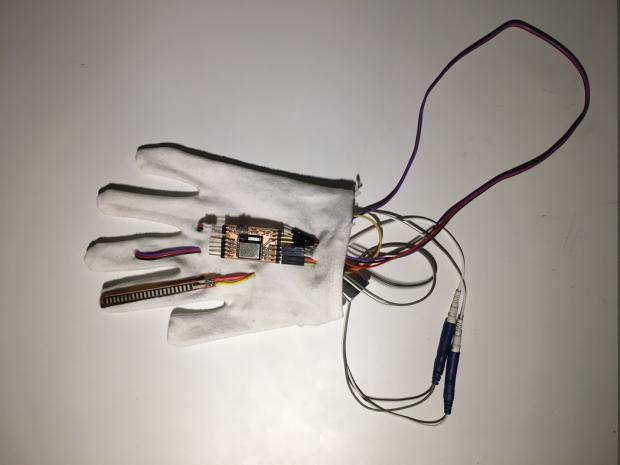
Breaking News
 2 Hours of Retro Sci-Fi Christmas Songs | Atomic-Age Christmas at a Snowy Ski Resort
2 Hours of Retro Sci-Fi Christmas Songs | Atomic-Age Christmas at a Snowy Ski Resort
 Alternative Ways to Buy Farmland
Alternative Ways to Buy Farmland
 LED lights are DEVASTATING our bodies, here's why | Redacted w Clayton Morris
LED lights are DEVASTATING our bodies, here's why | Redacted w Clayton Morris
Top Tech News
 Travel gadget promises to dry and iron your clothes – totally hands-free
Travel gadget promises to dry and iron your clothes – totally hands-free
 Perfect Aircrete, Kitchen Ingredients.
Perfect Aircrete, Kitchen Ingredients.
 Futuristic pixel-raising display lets you feel what's onscreen
Futuristic pixel-raising display lets you feel what's onscreen
 Cutting-Edge Facility Generates Pure Water and Hydrogen Fuel from Seawater for Mere Pennies
Cutting-Edge Facility Generates Pure Water and Hydrogen Fuel from Seawater for Mere Pennies
 This tiny dev board is packed with features for ambitious makers
This tiny dev board is packed with features for ambitious makers
 Scientists Discover Gel to Regrow Tooth Enamel
Scientists Discover Gel to Regrow Tooth Enamel
 Vitamin C and Dandelion Root Killing Cancer Cells -- as Former CDC Director Calls for COVID-19...
Vitamin C and Dandelion Root Killing Cancer Cells -- as Former CDC Director Calls for COVID-19...
 Galactic Brain: US firm plans space-based data centers, power grid to challenge China
Galactic Brain: US firm plans space-based data centers, power grid to challenge China
 A microbial cleanup for glyphosate just earned a patent. Here's why that matters
A microbial cleanup for glyphosate just earned a patent. Here's why that matters
 Japan Breaks Internet Speed Record with 5 Million Times Faster Data Transfer
Japan Breaks Internet Speed Record with 5 Million Times Faster Data Transfer
MIT Researchers Have Developed a 'System for Dream Control'

There is a borderland between waking life and the uncharted wilderness of sleep that we all traverse each night, but we rarely stop to marvel at the strangeness of this liminal world. If we do, we find that it is full of hallucinations both wonderful and terrifying, a mental goulash of reality and fantasy.
Usually we pass through this state of half-wakefulness on our way to deep sleep within minutes. We may experience microdreams during the transition, but the content of these microdreams appear to be random and we usually don't have any memory of them when we wake. A team of researchers led by MIT doctoral candidate Adam Horowitz wants to change that.
Horowitz and his colleagues at the MIT Media Lab have developed a relatively simple device called Dormio to interface with this unique stage of sleep. Their hypothesis is that this liminal period between wakefulness and sleep is a fount of creativity that is usually lost in the ocean of sleep. The thinking is that if you're able to descend into that stage of sleep and return to consciousness without descending deeper into sleep, you will benefit from the intensely associative thinking that characterizes the strange microdreams experienced during the transition to sleep.
So far Horowitz has tested the device on 15 subjects and found that it is able to reliably maximize the amount of time users spend suspended between wakefulness and sleep, as well as shape the content of the microdreams they experience. In other words, these MIT researchers have developed a low cost device that allows users to interface with sleep.
WHEN IS A SLEEPER ACTUALLY ASLEEP?
The technical name for the awareness of the brief period between wakefulness and sleep is hypnagogia, and its something of a mystery for neuroscientists. The reason for this is that determining when someone is actually asleep is a matter of debate among scientists. It's kind of like trying to determine when someone is 'actually' dead: Is it when the heart stops beating, when they lose consciousness, or when cells finally stop replicating?
What is certain, however, is that hypnagogia is a natural phenomenon that almost all of us encounter on a nightly basis.
"Hypnagogic imagery or hallucinations is a normal state of consciousness in the transition from wakefulness to sleep," Vladas Noreika, a psychologist at Cambridge who was not involved with Dormio, told me in an email. Unlike other sleep states that allow for awareness, such as lucid dreaming during REM sleep, hypnagogia doesn't require special training to induce its effects. It's a common phenomenon that is a natural part of the circadian rhythm.

 $100 SILVER CONFIRMED?
$100 SILVER CONFIRMED?

